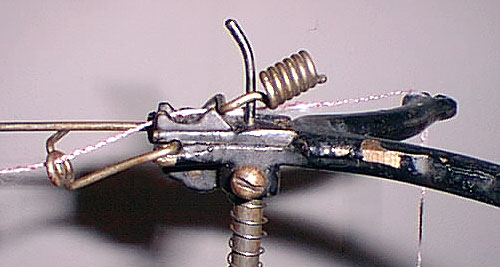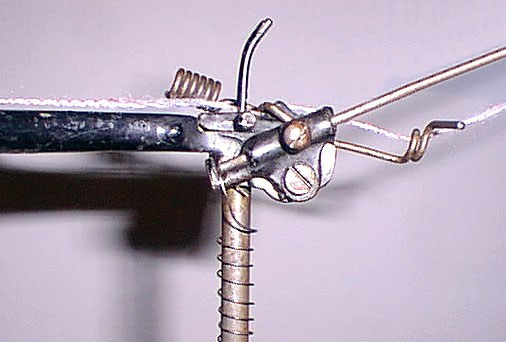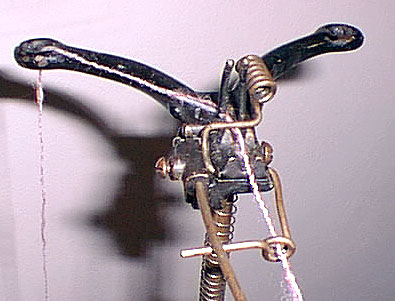 Side view of the LeGare yarn stand. This is the position when yarn is being fed. Notice the spring on left is lifted so the yarn can feed. The long arm goes on top of the little finger on the "check spring" or "takeup lock" so it can push it down to release the yarn. That little "spring" near the middle with six loops is not really a spring. It is just a coil of wire--it is only there for weight, so it doesn't make any difference what the shape really looks like. |
 View from other side. This is the intermediate position when the yarn is moving upward with the arm, but not through the "checkwire" or "takeup lock." The cross-arm by the "spring" is holding the yarn still as the arm raises and takes up the slack during the time when the yarn feeder goes back beyond the working needles. You may need to bend the little wire assembly to get it to make good contact against the casting and hold the yarn. |

